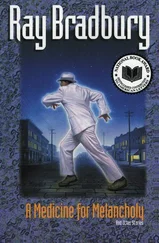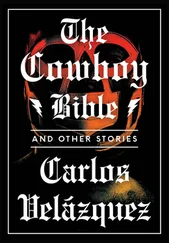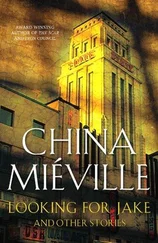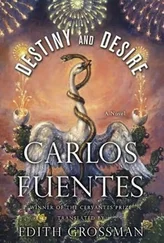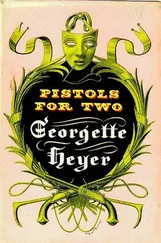How can I be believed? How can I prove my sincerity? And if she doesn’t believe me, how can I believe in her? It’s okay for a nineteen-year-old writer to say these things; perhaps confidence is, after all, the most important thing. But my fear is something known best in adolescence, though never completely forgotten, even if concealed: love is an abyss.
I choose henceforth to put my trust in one woman: will La Desdichada be my abyss, the first, best, and most faithful lover of my life? Toño would laugh. It’s easy to count on the fidelity of a wooden doll. No, it’s hard, I tell him, for a wooden doll to rely on the fidelity of a man of flesh and blood.
(iii)
Twenty-five years later, I returned from all the cities of the world. I wrote. I loved. I did things that pleased me. I tried to turn them into literature. But the things that pleased me were sufficient unto themselves. They didn’t want to be words. Likes and dislikes, tastes and distastes fought among themselves. With luck they became poetry. The poetry of the changing city reflected my own tensions.
I knew the old Waikiki was closing, so I went there one night. The last night it was open. I saw Toño sitting a little ways from me. He had gotten fatter and had an impressive mustache. There was no need to greet each other. What would he think of me, after a quarter of a century? We walked between the tables, the dancing couples, to shake hands and sit down together. All this without speaking a word, while the band played the anthem of all slow dances, Nereidas. Then we laughed. We had forgotten the ceremony, the rite that affirmed our public friendship. We stood up. We embraced. We slapped each other on the back, on the waist, Toño, Bernardo, how are you?
We didn’t want to reminisce. We didn’t want to slip into an easy nostalgia. The Waikiki was taking care of that. We started talking as if no time had gone by. But the end of an era was being celebrated all around us; the city would never be the same, the Expressionist carnival was ending, from now on everything would be much too vast, distant, ground down; tonight marked the end of the theatrics that everyone could share, the witticisms that everyone could repeat, the celebrities that we could celebrate without risk of foreign comparisons: our village, rose-colored, blue, vivid, was going away, it was whirling around us, inviting us to a carnival that was a funeral, the footlights pointed toward the edges of the nightclub full of smoke and sadness so that we were all mixed together: show, audience, whores, Johns, band, masters, servants, slaves: out of this crowd that moved like a sick serpent, two extraordinary figures emerged: a Pierrot and a Columbine in perfect costume: they both wore whiteface, his forehead was black, her tragic smile was painted on with lipstick; he had the black gorget, the shiny white suit of a clown, the black buttons, the satin slippers; Columbine had the white wig, the tiny fairy cap, the white gorget, the white mesh stockings, the ballet slippers; their moonlike faces were both masked.
They came over to us, said our names. Bernardo, welcome to Mexico! Toño, we knew you’d be here! Come on! Today marks the end of the Mexico City we knew, today one city dies and another is born, come with us!
Laughing, we asked their names.
— Ambar.
— Estrella.
— Come with us.
We took taxi after taxi, the four of us squeezed in together, breathing the intense perfume of those strange creatures. It was the last night of the city we had known. The ball at San Carlos, where they took us that night (the perfumed couple, Pierrot and Columbine), was the annual saturnalia of the university students, who cast aside the medieval prohibitions of the Royal, Holy University of Mexico amid the Neoclassicism of the eighteenth-century palace’s stone staircases and columns: disguises, drinks, abandon, the always threatening movement of the crowd carried away by the dance, the drunkenness, the sensuality on display, the lights like waves; who was going to dance with Ambar, who with Estrella: which was the man, which was the woman, what would our hands tell us when we danced first with Columbine, then with Pierrot? And how easily the two were able to avoid our touch so that we were left without sex, with only perfume and movement. We were drunk. But we justified intoxication with a thousand excuses: seeing each other after so many years, the night, the dance, the company of this couple, the city celebrating its death, the suspicion I formed in the taxi, when we all climbed in and Estrella ordered: “Let’s have one for the road at Las Veladoras”—an outdoor bar lit by votive lamps: could it be Arturo Ogarrio and his girlfriend, his double? I asked Toño No, he answered, they’re too young, the best thing would be to pull off their masks, find out for sure. So we tried, and they both shrieked in androgynous voices, screamed horribly, squealed as pigs would if we took their hind legs and castrated them, and they cried for the taxi driver to stop, they’re killing us, and the flustered driver came to a stop, they got out, we were in front of the cathedral, Ambar and Estrella ran past the iron gate into the churchyard and on into the splendid cave of carved stone.
We followed them inside, but our search was futile. Pierrot and Columbine had disappeared into the bowels of the cathedral. Something told me that Toño and I had not come here to find them. Sacred, profane, cathedral, cabaret, school, Orozco’s mural, the carnival of San Carlos, the agony of Mexico; I felt dizzy, I grasped a gilded screen in front of a dark side altar. I tried to catch Toño’s eye. He didn’t look at me. Toño was holding on to the screen with both hands and gazing intently at the altar behind it. It was dawn and some religious women who had been there for four centuries knelt down one more time, wrapped in black shawls as always, with skins like yellow onions. Toño didn’t look at them. The incense made me nauseated, the smell of rotting spikenard. Toño stared fixedly at the altar.
The Virgin, with her cowl, her gown of ivory and gold, and her velvet cape, was weeping as she gazed at her dead Son lying cradled in her arms. The Christ of Mexico, wounded like a bullfighter, cut to pieces in a great, never-ending corrida, bathed in blood, gored: His wounds would never heal, that’s why His Mother cried; although He came back to life, He was wounded, caught by the bull. She rested her feet on the horns of a bull, and she wept. Down her cheeks rolled huge black tears, like the ones on the Pierrot who wouldn’t let me take off his mask. He never stopped bleeding, she never stopped crying.
Now I joined in the contemplation of the Virgin. Her sculptor had given her a face of classic features, a straight nose and nicely spaced eyes, languid, half open, and a tiny, tight mouth painted to look like a ribbon. Her chin was a little prognathous, like the Infantas of Velázquez. She also had a long neck, perfect for her gorget, which was like Columbine’s. At last she had found her niche. At last the cause, the background of her misery, her des-dicha, became clear. She opens her arms to ask mercy for her Son, and her praying hands, open, don’t quite touch the object of her passion. The ring finger of her left hand is missing. Her long eyelids, like a lizard’s, look at us half-closed, look at Toño and me as if we are lifeless wooden dolls. Her eyes are infinitely sad. As if they had witnessed a great unhappiness in another time.
Toño
… The air became so filthy, the city so sprawling and remote, our destinies were fulfilled, accomplished — we were what we were, writers, journalists, bureaucrats, editors, politicians, businessmen, no longer “will be,” but “were,” back in those years, when the air was so …
Читать дальше

